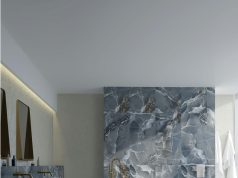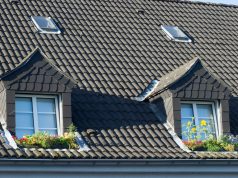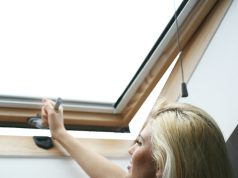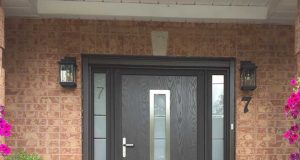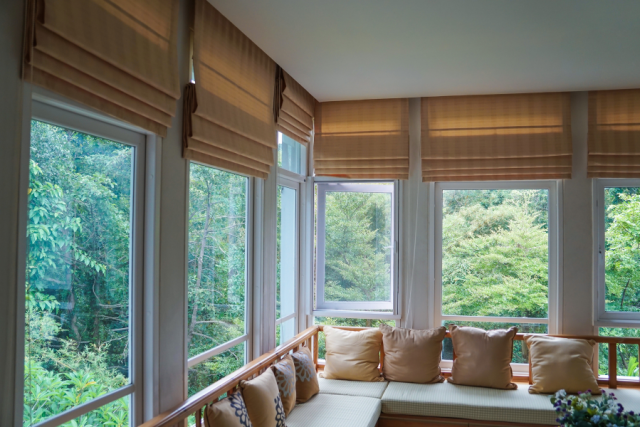
It seems like everything is very expensive nowadays.
Whether it’s the fuel in your car, the food on your table, or the bills that land on your doormat, high levels of inflation across Europe – following a global pandemic and war in Ukraine – mean that our money doesn’t go as far as it used to.
In the UK, nine out of 10 Brits report that their cost of living has increased, causing us to pause for thought and consider ways to save money. Those ways might include growing more fruit and vegetables in our gardens, heating our homes for shorter periods, driving less and limiting the number of times we go out to dinner.
These are all valid methods of reducing our outgoings, but our long-term choices should also be considered. Beneath the umbrella of ‘long-term’ might be architectural considerations, specifically those made when planning a renovation project or designing a building.
You might, for example, choose more cost-effective materials such as laminate flooring over hardwood, or asphalt roofing rather than tiles or metal. But does glazing have a part to play in keeping costs down?
Absolutely it does.
Whether it’s glass walls to open up a space, or a glass roof that maximises natural light, architectural glazing can be deployed to save you money.
In this article, we’ll give you five ways it can do so.
Let’s begin!
1. Energy-efficient insulation
If you’ve ever sat in a draughty single-glazed room during the freezing temperatures of winter, you’d be forgiven for overlooking glass when installing energy-efficient insulation.
But it’s important to recognise two things: firstly, glass has come a long way from the early days of single glazing. Today, modern glazing – which can be double or even triple – incorporates things like low-emissivity coatings, thermal breaks, and high-quality window sealants to boost insulation and ensure products are as energy efficient as possible.
The second thing to remember when you think back to the draughty, single-glazed room is that those windows are likely quite old, having long passed their prime long ago and lost the few insulating properties they once had, requiring replacement with the previously-mentioned modern products.
As well as saving you money, energy-efficient glazing can also contribute towards our collective efforts to reduce the size of our carbon footprint, an important consideration as global average temperatures continue to rise. Far from being a nice-to-have bonus, reducing our impact on the climate is one of the most important issues facing our modern world, illustrated by the fact that 35% of the world’s emissions come from the energy supply sector.
2. Daylight harvesting to reduce artificial sources
We all know the many benefits of natural light. At Cantifix, we don’t stop talking about them and probably never will. But as well as being good for our health, happiness and productivity, increased levels of natural light also reduce our reliance on artificial sources.
The average house is home to an impressive 67 lightbulbs. If you are in charge of an office building or larger complex, that number of bulbs is likely to be far higher. While the cost of lighting all those bulbs – likely to be approximately 55 pence per hour – doesn’t seem like a huge sum of money, it is a sum of money that can quickly add up over the course of a year, certainly cause for attention as most of us are guilty of leaving lights on when we leave the room and even the house!
If you’d like to reduce your reliance on artificial lighting, consider expanding the windows in your home or installing glass doors that allow natural light to flow from the sunny south side of your property through to the north (if you’re in the northern hemisphere). You could also consider installing smart sensors that automatically switch lights on and off depending on light levels and your room usage, making sure that you never forget to turn a light off again!
3. Solar glazing
This is an exciting bit of tech.
It combines the appearance of glazing with the power generation of solar panels to create a seamless, versatile method of producing green energy. Whereas traditional, standalone solar panels might be seen by some as obtrusive and an inconvenient addition to a building project, solar glazing can be an aesthetically interesting alternative, coming in a range of colours with varying degrees of shading (from 0% transparency to 50%).
By including solar glazing in your next project, you can incorporate sustainable energy solutions without compromising on the overall creative concept that you are trying to achieve.
Not only does it contribute to reducing your building’s carbon footprint, but it also offers long-term energy savings by harnessing the power of the sun. The electricity generated by solar glazing can be used to power lighting, heating, cooling systems, and other electrical needs within the building, making it a valuable investment in energy efficiency.
4. Water-collecting glazing
Similar to the self-sufficiency of solar glazing, water-collecting glazing does what it says on the tin. As rain falls onto the glazing, it’s channelled down into awaiting storage tanks which can then feed the non-potable plumbing in your building and supplement your existing supply.
The average water bill in the UK is approximately £194 per year, a figure that will vary depending on the size of your building and the amount of water its occupants consume. Water-collecting glazing can reduce your water bills and your consumption of a resource that could become scarce as periods of drought increase with the effects of climate change.
As public awareness of water scarcity and conservation grows, buildings equipped with water-collecting glazing stand out as examples of responsible and forward-thinking architecture. Your building can serve as a beacon of sustainable design and inspire others to adopt eco-friendly practices which also reap financial rewards – in this case, a reduction in your water bills.
5. Reduced maintenance costs
Modern glazing, if designed and manufactured correctly, is remarkably durable and significantly more resistant to wear and tear than more traditional materials. Wood, for example, is liable to rot if not regularly treated with a chemical cocktail, and cladding can simply fall off during high winds or when exposed to extreme contrasts of temperatures.
Glazing, on the other hand, requires very little maintenance and provides a stylish barrier against extreme weather events.
In practical terms, what that means is that your upkeep costs are going to be very minimal. If applicable, your building management team can, therefore, allocate their time elsewhere, safe in the knowledge that glass will, for the most part, take care of itself.
When people think about glazing, what comes to mind might be sleek, stylish and versatile architectural design, but it might not be how its deployment can save you significant sums of money and reduce your carbon footprint. It might seem like you can’t have your cake and eat it, but we hope this article has proved you certainly can!

